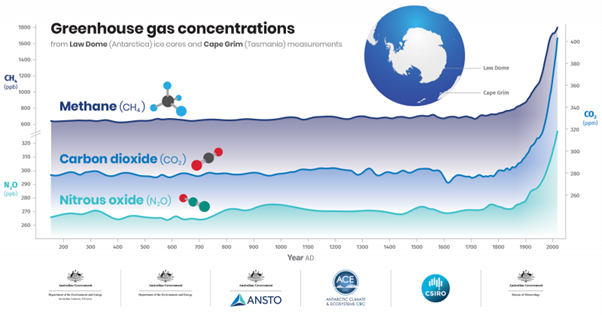How do they know the climate and percentage of gases, such as methane, in the 1800s?
Understanding past climates involves studying naturally occurring archives such as ice cores, tree rings and lake sediments, among others, from around the world including Tasmania and Antarctica. Each of these archives accumulate layers over time. This is similar to the pages of a book, where each page represents a particular period of time and each page tells you something different. Using many different chemical, geological, biological and physical methods, it is possible to reconstruct what the climate was like in the past.

Ice cores can be used to measure past greenhouse gas concentrations, such as carbon dioxide and methane. These gases are trapped in air bubbles in the ice (see photo). Layers of ice can accumulate annually, which means the ice cores trap a record of greenhouse gas concentrations year by year. It is from these concentrations that it is possible to calculate the percentages of different greenhouse gases, including methane. The figure below shows the concentrations of the major greenhouse gases: methane, carbon dioxide and nitrous oxide over the last 2000 years. It is clear that since the 1800s, concentrations have sharply risen and will continue to rise unless we make dramatic changes to reduce emissions.

A great read: Dr Karl’s Little Book of Climate Change Science by Karl Kruszelnicki (2021, ABC Books)











